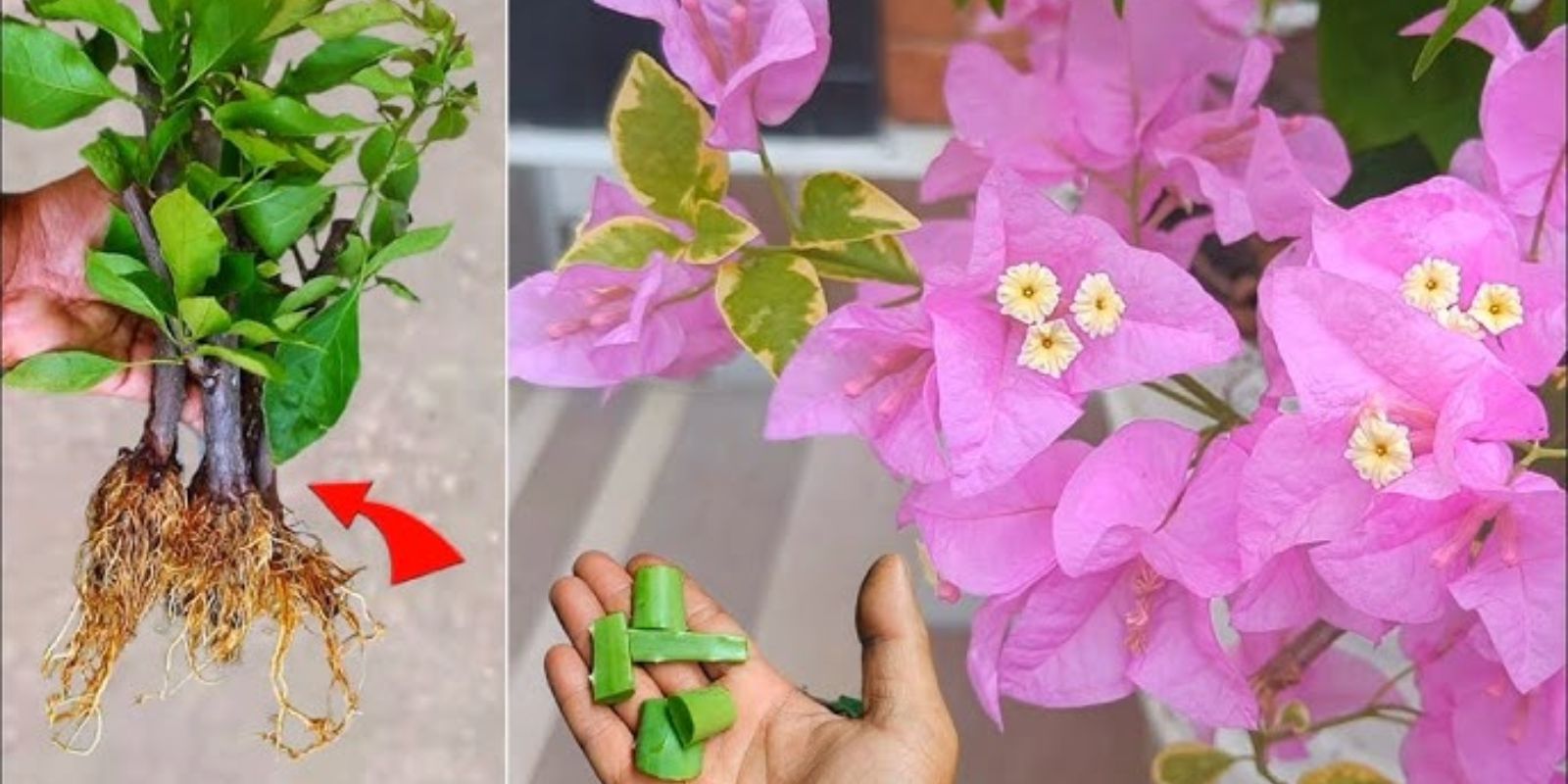Bougainvillea is a gardener’s delight, celebrated for its stunning array of vibrant bracts that bring tropical beauty to any garden. While buying bougainvillea plants is an option, propagating them from cuttings is an easy and rewarding way to grow your collection. This method is cost-effective, simple, and ensures that you can share your favorite varieties with friends and family. In this article, we will explore the step-by-step process to propagate bougainvillea, helping you turn cuttings into thriving plants.
Why Propagate Bougainvillea?
Bougainvillea propagation is not just about saving money; it’s about connecting with nature and witnessing the miracle of life as a simple cutting transforms into a lush, flowering plant. Propagation allows you to:
- Grow specific bougainvillea varieties you love.
- Create hedges, trellises, or vibrant potted plants.
- Share plants with fellow gardening enthusiasts.
Bougainvillea is hardy, drought-tolerant, and low-maintenance, making it an excellent addition to gardens, patios, and balconies. Propagating it is a skill worth mastering for both beginner and experienced gardeners.
What You’ll Need
Before diving into the propagation process, gather the following materials:
- Healthy bougainvillea plant for cuttings.
- Pruning shears or a sharp knife.
- Rooting hormone (optional but beneficial).
- A small pot or container.
- Well-draining potting mix (e.g., a mix of sand and compost or perlite).
- Clear plastic bag or a mini greenhouse dome.
- A warm, shaded location for the cutting.
Step-by-Step Guide to Propagating Bougainvillea
1. Select Healthy Cuttings
Choose a semi-hardwood branch from an established bougainvillea plant. Semi-hardwood refers to stems that are not too young or too old—flexible but firm. Cut a 4-6 inch section just below a node, ensuring it has at least 2-3 nodes (the points where leaves grow). A healthy, disease-free cutting increases the chances of successful propagation.
2. Prepare the Cuttings
Remove the leaves from the lower half of the cutting, leaving a few at the top. This prevents the cutting from losing too much moisture while still allowing photosynthesis. Trim the base of the cutting at a 45-degree angle to maximize surface area for rooting.
3. Apply Rooting Hormone (Optional)
Rooting hormone can speed up the rooting process and improve success rates. Dip the cut end of the bougainvillea cutting into the rooting hormone powder or gel. Shake off any excess before planting.
4. Prepare the Potting Mix
Bougainvillea requires well-draining soil to prevent root rot. Create a mix using equal parts of sand and compost or perlite. Ensure the soil is slightly moist but not soggy. Fill a small pot or container with the prepared mix.
5. Plant the Cuttings
Make a hole in the soil using your finger or a pencil, and insert the cutting about 2-3 inches deep. Firm the soil gently around the base to provide stability. Avoid overcrowding if propagating multiple cuttings in one pot.
6. Maintain Humidity and Warmth
Cover the pot with a clear plastic bag or place it in a mini greenhouse to create a humid environment. This helps the cutting retain moisture while developing roots. Leave a small gap for air circulation to prevent mold or fungal growth.
7. Place in Indirect Sunlight
Bougainvillea cuttings thrive in warm, shaded locations. Avoid direct sunlight, which can dry out the cuttings. A spot with indirect sunlight and consistent warmth (70-85°F) is ideal for root development.
8. Monitor and Water Sparingly
Check the soil regularly and water lightly to keep it moist but not waterlogged. Overwatering can lead to rot and hinder root growth. Be patient—bougainvillea cuttings typically take 4-6 weeks to root.
9. Check for Root Development
Gently tug on the cutting after a few weeks. Resistance indicates that roots are forming. Once roots are established, you can remove the plastic covering and gradually expose the cutting to more light.
10. Transplanting the Rooted Cuttings
When the cutting has a strong root system, it’s time to transplant it. Choose a larger pot or a sunny spot in your garden with well-draining soil. Bougainvillea thrives in full sun and requires minimal watering once established.
Tips for Successful Bougainvillea Propagation
- Timing Matters: Propagate bougainvillea during the growing season (spring or early summer) for the best results.
- Patience is Key: Rooting can take time. Avoid disturbing the cutting too often.
- Fertilize Wisely: Once the plant is established, use a balanced fertilizer to encourage growth and blooming.
- Prune Regularly: Pruning helps shape the plant and encourages new growth.
Common Mistakes to Avoid
- Overwatering: Bougainvillea cuttings need moisture, not waterlogged soil.
- Inadequate Humidity: Without proper humidity, the cutting may dry out before rooting.
- Using Old Wood: Always select semi-hardwood cuttings for the best success rate.
Why Choose Bougainvillea?
Bougainvillea is a versatile and stunning plant that brings year-round beauty to your garden. Its resilience and drought tolerance make it perfect for low-maintenance gardening. Plus, with so many varieties available, you can enjoy a rainbow of colors in your outdoor space.
Share Your Bougainvillea Journey
Propagating bougainvillea is an enriching experience, offering the satisfaction of growing something beautiful from scratch. Whether you’re a gardening novice or a seasoned pro, this step-by-step guide makes it easy to multiply your favorite bougainvillea varieties.
🌺 Have you tried propagating bougainvillea? Share your tips, photos, and success stories in the comments below! Let’s grow together!
Gardening Hashtags:
#PropagateBougainvillea #DIYPropagation #GardenGoals #VibrantBlooms #TropicalPlants #PlantLovers #GardeningHacks #GardenInspiration #BougainvilleaLove

